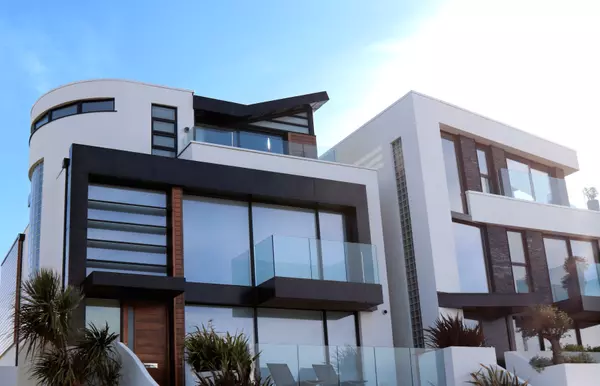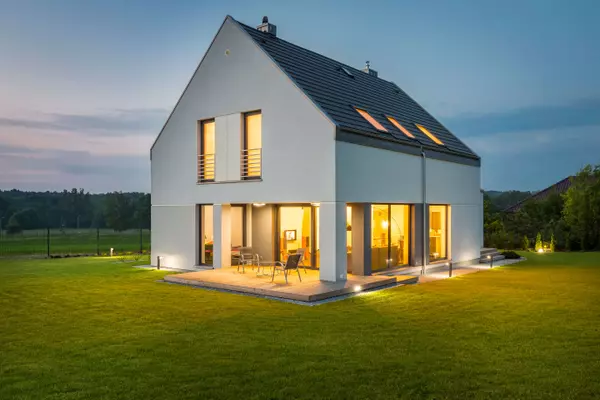Ready for a reset on St. Lucia
For The Union-Tribune
Despite our addiction to travel, we seldom use the word “vacation.” My husband Benjamin and I hit the ground running, maximizing experiences in front of us, even if we leave more exhausted than when we arrived. Life is short, aspirations are long, and budget is somewhere in between.
We avoid visiting the same place twice, knowing that our bucket list still has some unchecked boxes. Ironically, island escapes are not at the top of it. We’re like tropical Scrooges-of-the-sea, choosing surfing over sunning, knowing there’s only so long we can lay in the sand without the fear of blistering rays or death by coconut.
I thought of all this on our way to St. Lucia, an island between Martinique and St. Vincent. Other than Puerto Rico, neither of us had never been to the Eastern Caribbean archipelago. Timing, budget and desire had somehow aligned with five days to pause in paradise. Peeling back the foil on his airplane meal, Benjamin leaned over to see if I had made the wiser choice.
I hadn’t.
Victoriously twirling his pasta, he asked, “What are we going to do there?”
Pushing away my untouched tray, I closed my eyes. “Sleep. That’s what we’re going to do. Sleep.”

Unlike most getaways, this trip to the West Indies had little on the itinerary other than rest and recuperation. With full-time jobs and a hobby-turned-business, we were tired. Twenty hours of travel and a redeye flight didn’t help. Once on land, we immediately went into “us mode,” asking our driver all sorts of questions, subconsciously turning the taxi into a textbook.
During the 45-minute drive, we learned how the international airport was built and used by the U.S. Air Force during World War II to protect the Caribbean. We heard how St. Lucia changed hands 14 times, slipping through the fingers of the French and British until finally becoming a sovereign nation in 1979.
I was slightly older than St. Lucia, meaning we could potentially be friends. Unlike me, St. Lucia was not showing her age. She was full of youth and color as we skirted mountains and beaches on our way to the southwest side of the island. Perched on hillsides were tin-roof homes painted turquoise, coral and sunshine-yellow. In the horizon were banana plantations, palm-fringed beaches and slope-side towns where hibiscus and bougainvillea grew like weeds.
Framing the narrow shoulder were fallen mangos, crushed beneath our tires like rich man’s litter. The air smelled of sea salt, cinnamon and tropical fruit, as if God had spilled sunscreen from the heavens during application. In the background was the faint sound of steel drums, making me wonder whether we were entering Carnival or if St. Lucia constantly moved to the rhythm of reggae and calypso.
Rolling down his window, our driver slowed to greet friends with a fist bump and tap of his heart. Although English was the official language, our driver— and many locals — spoke Creole (Kwéyòl) with one another, a French-based vernacular he claimed was endangered due to the next generation’s obsession with social media.
That made me sad, as did his comment about bustling towns and sugar farms colonized by the French, and African slaves who had kept them running. But with abolition in 1834, and independence 145 years later, a freedom and culture were awakened, so rich you could taste it. And, at Rabot Estate, we did.
As the oldest cacao farm on the island, the 140-acre plantation was purchased in 2006 by British luxury chocolate brand, Hotel Chocolat. Behind the vision were U.K. entrepreneurs Angus Thirlwell and Peter Harris, who bridged the gap between growing cacao and making artisanal chocolate.
In less than three years, the semi-abandoned farm turned into a revival of St. Lucia’s cacao industry that now supports more than 50 island growers. From seedling to roasting, sustainable farming methods have helped transform an initiative into an empire of chocolate shops, a boutique hotel, restaurant, spa and cacao farm with immersive tours. Headquarters for the crop were right outside our door at Rabot Estate.
For now, we would just eat the harvest at the hotel’s restaurant. A far (and good) cry from Hershey’s, nearly every dish was delicately infused with cacao. From tangy pulp to roasted nibs, every part of the pod was integrated into the traditional menu featuring saltfish, callaloo soup, and stewed meats with tropical fruits and island spices. From farm to fork were eggs, coffee, herbs, honey, vinegar and ricotta. Cacao-braised pork, tuna tartar drizzled with cacao oil, white-chocolate mash, cacao nib rice, grilled fish with cacao butter — it was like Willy Wonka and Gordon Ramsay were locked in the kitchen and turning out magic.
Apparently New Yorkers fly in by private jet just for dinner. Luckily for us, our commute was steps away to bungalow No. 5. They hooked us with “adults-only” and reeled us in with open-air rainforest suites overlooking the Piton mountains.
We’ve had our fair share of rooms with a view, but nothing quite like this. Rising dramatically from the sea, St. Lucia’s twin volcanic peaks powerfully created one of the most iconic landscapes in the Caribbean.
They didn’t seem real, but some 12 hours later, they were the dreamiest view I could wake up to. Rested and back on physical track, we started with a morning hike, only to find out that halfway in, humidity would pivot us toward the pool. “Island time” was eminently real, where people were relaxed, the pace was slow, and no one wore a watch.
Taxis “minutes away” would leave us drawing faces in the sand for hours. Tours were delayed, reservations would go missing, but “Ya mon,” life was good … and so was the rum … and cacao gin, and salted-caramel vodka, and chocolate velvetised cream. They had it all at Rabot Estate’s Project Chocolat, during the “Tree to Bar” experience.
Our farm tour through the rainforest concluded with liquor tasting and handcrafting our own chocolate bar. With a mortar and pestle, we ground nibs, sugar and cocoa butter into a paste, muscling our way to a 65% organic chocolate bar that never made it past midnight.
Mine was good, Benjamin’s was better.
At sunset, we walked the estate’s jungle trail through a cacao grove around Rabot Lake. Lizards scampered up bamboo, dragonflies kissed the water, and hummingbirds darted from pod to petal. Along the boardwalk we stopped to smell the limes, coffee, cashews and bananas. I felt alive, parkouring off of boulders, swinging from branches and singing until I tangled the lyrics.

Travel does that. It brings out the best me when priorities, productivity and profession are faded by the culture in front of me.
“You live your life in these sunny little experiences,” my husband said, “and I get to watch them rise and set every day.”
It seemed that sun was setting a little later in St. Lucia, as we slowly discovered our own rhythm. Despite the fact that our hotel had ocean views, we had yet to touch the Caribbean Sea. A 10-minute drive took us to Malgretoute Beach for margaritas and roti — a traditional flatbread filled with curry stew.
The soft brown sand reminded me of beaches back home in San Diego, but as we soon discovered, not all beaches are created equal. Some had black sand, others had white, and several strands — including the island’s most pristine, Sugar Beach — imported the powdery perfection to the island.

For us, none of that mattered. The coastline became an aesthetic backdrop rather than a tactile activity. Such was the case at Caille Blanc Villa & Hotel, a 15-minute drive up the coast near the village of Soufrière.
For the second leg of our trip, we went big, opting for a suite at the 6-bedroom boutique hotel. Beyond the fountain courtyard was a 65-foot infinity pool and waterfall overlooking the Pitons and sea. Hand-carved wooden doors unveiled massive rooms with Balinese-meets-safari decor, complete with four-poster beds draped in linen. Palm-leaf ceiling fans twirled overhead while our butler accordion-folded back an entire “wall” facing the ocean.

Nothing stood between us and the view, as every barrier was removed that blocked us from nature. Hidden beneath our cliffside room was a staircase that led to a private snorkeling cove. Purple sea fans waved beneath the surface while iridescent blue chromis, a type of damselfish, looked fit for a rave. We floated above the reef, mesmerized by the crackling and snapping sound that took me back to my childhood, when Pop Rocks served as currency between classmates. That jungle trail to the cove became our sunset ritual, tugging on Tarzan vines and sharing tales of underwater adventures.

We thought the snorkeling was good until the following morning, when it was great. Just offshore at Anse Chastanet Beach were shallow reefs where needlefish looked ready to fix a button and trumpetfish were on their way to craft as pipe cleaners. Circling brain coral were all types of neon fish — sergeant major, parrot, squirrel, angel and butterfly — all reminiscent of Dr. Seuss book escapees.

Our aqua day was just getting started. From there, we went to Sulphur Springs, the world’s only drive-in volcano, where we soaked in mud baths that are purported to detoxify the body and cure everything from eczema to arthritis. We painted our bodies like warriors, letting the mud dry and crack on our skin like sourdough crust. Nearby, we deep-rinsed at Toraille Waterfall, cascading 50 feet onto our shoulders and backs.
The massage-by-nature seamlessly took us to a place of calm, and we grabbed sugarcane sticks on our walk back to town, gnawing on the fibrous stalks while recognizing honks as greetings rather than road rage. These were the small things that pushed reset on our souls. Well, that, and the al fresco lunch at Mango Tree Restaurant.

Perched on the bluff at Stonefield Villa Resort, the award-winning restaurant served Creole dishes like fried fish with coconut rice and beef pepperpot stew with green-fig mash. We toasted to nothing in particular and slept to live another day.
Oddly enough, we napped … a lot. As non-nappers, we couldn’t get enough of the inside of our eyelids. The sound of steel drums made their way from our dreams onto our terrace, as live music was on deck right outside our door. We swam at sunset, ate dinner at dark, and danced at midnight.
It was almost too perfect, and even more so during our bamboo rafting experience on the Roseau River. For two miles, we glided under rainforest canopies, sipping from fresh coconuts while iguanas sunbathed in branches.
Our guide explained how St. Lucia was once called “Ioüanalao” by the Arawak Indians, and later “Hewanorra,” by the Caribs, both meaning “where the iguana is found.” In the late 16th century, the island was officially named St. Lucia in honor of the Christian martyr, St. Lucy of Syracuse — making it the only sovereign state in the world named after a woman. There was certainly beauty behind it all.

Stabbing the muck with his bamboo pole, our guide pushed us from the narrow canals toward the open sea. Like claws to the earth, mangrove roots arched their way into the marsh, thirsty for the nutrients St. Lucia had to offer.
That sustenance was found on a private bay where our rafting experience ended with a beachside lunch. We swam in the ocean, grading one another on our aqua-gymnastics, with my handstand earning a perfect 10 due to my toe point. A pitter-patter of rain turned into a full-blown storm. We didn’t care, but our chef did. Motioning us toward shore, he was ready for shelter. Of course I had to ask how such an idyllic, perfect place could be deserted, with no one there but us.
“This is everyday — and everywhere,” he told me.
With less than 185,000 residents on an island stretching 27 miles long, perhaps there was plenty of space to live life fully; to walk the powdery sands that cradled the Caribbean; to embrace a culture that values the wisdom of its elders; to drive into volcanoes, plunge into children’s books, and climb natural wonders.
To stop and smell the cacao; to ignore the clock and live by the sun; to fist-bump your neighbor and tap your heart in gratitude; to dance under waterfalls and swim in the rain; to change hands 14 times and still declare your independence; to cling to your roots, and above all, to rise and set a little later because you’ve discovered your own island time.
Kast-Myers is a freelance travel writer based in Valley Center and the owner of Brick n Barn; marlisekast.com.
Categories
Recent Posts










GET MORE INFORMATION







